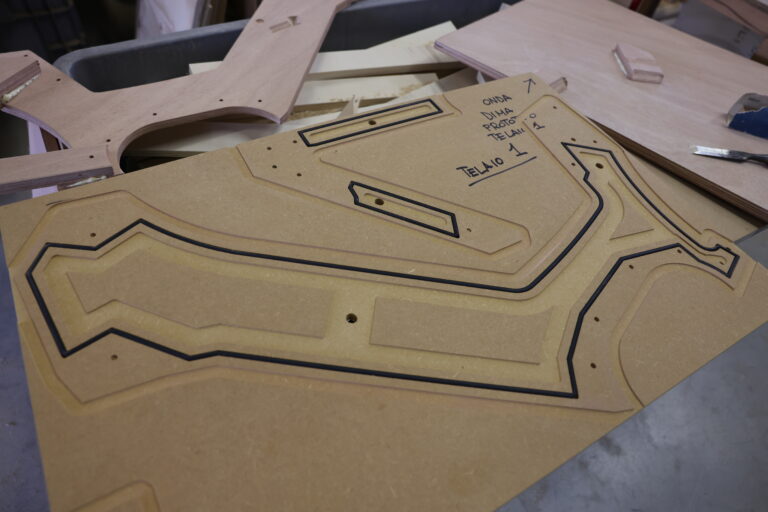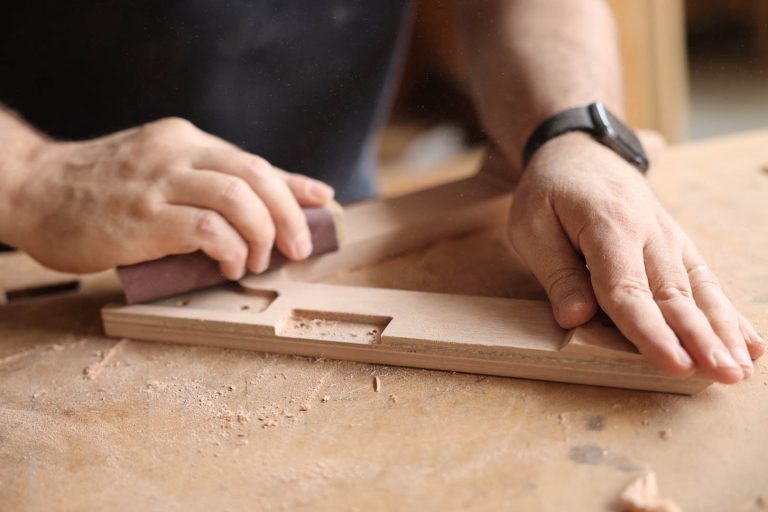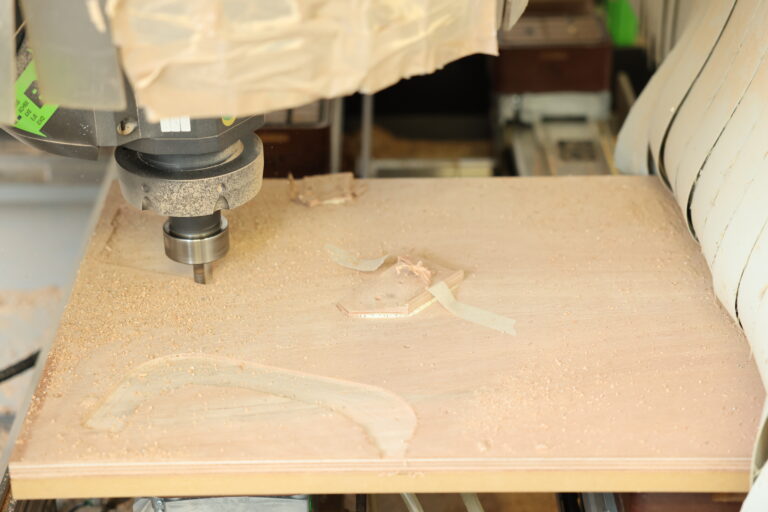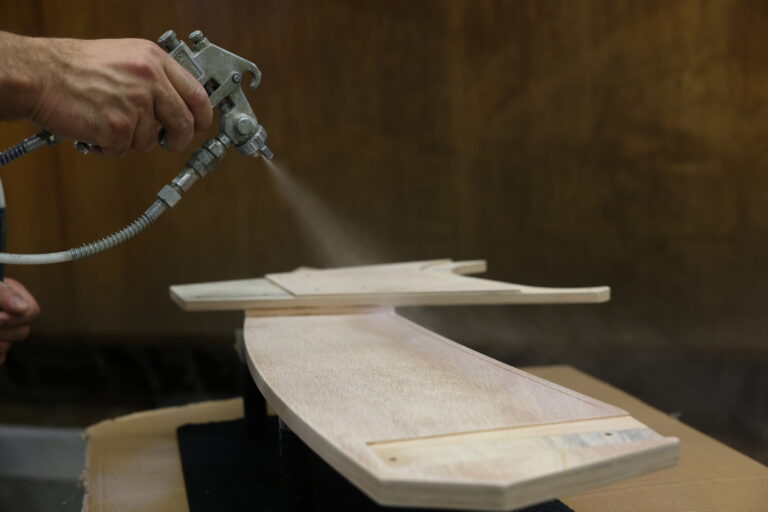Craftsmanship
Why the wood
An in-depth study of structure and materials
The structure of the 1963 ECBs is composed of 90% wood and 10% steel and other minor metal components.
The study of materials is increasingly pushing us to Maximize their intrinsic physical properties. As is the case in the world of avionics, for example, where several manufacturers still make parts of aircraft wings from wood, to have elasticity responses that metals and other composites cannot provide, ensuring safety and comfort.
We are accustomed to knowing wood as a material used in the making of furniture, chairs, houses...all objects that may be more or less design, but no doubt static!
With this project we wanted to breathe new life to wood and transform it into a dynamic material by exploiting its more natural properties of ductility and strength that make it suitable for sustainable mobility.
The woodworking as well as the structural studies and technical/physical tests that are carried out require great experience and manual dexterity, which is why 1963 chose Architect Antonio Belloni to create these innovative E-Bikes.
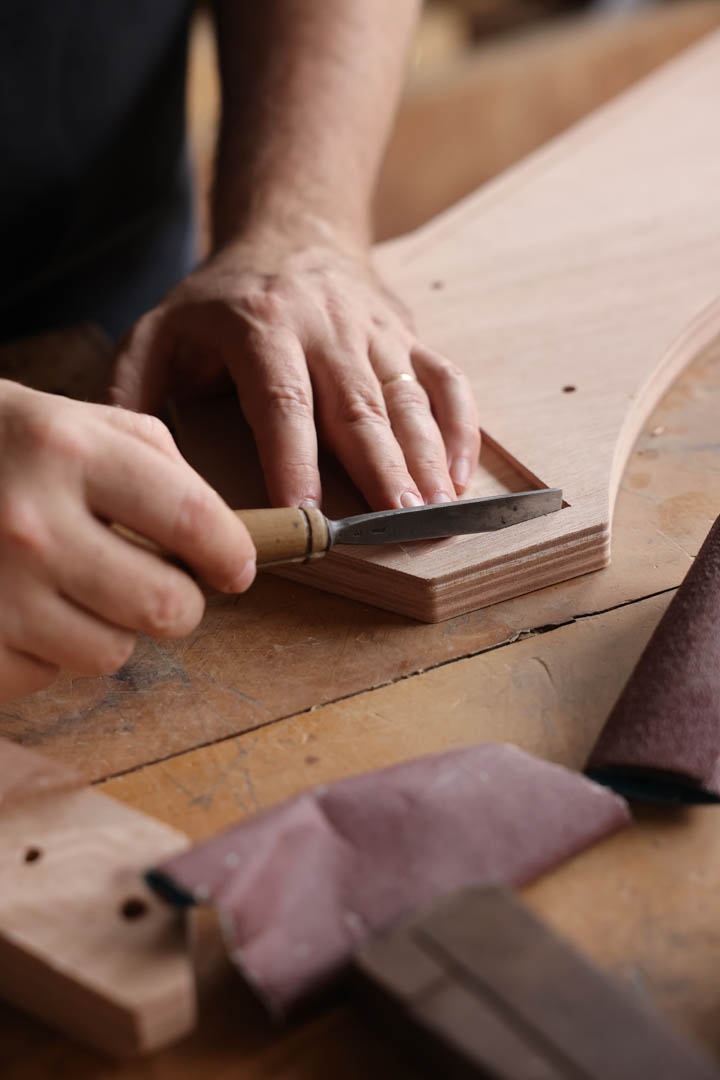
" A key concept that I kept in mind for both ECBs was the desire to create an e-bike that was comfortable, easy to use, and could truly become a city transportation tool. The use of wood, an element that is particularly dear to me, brings it even closer to the green concept of eco-sustainability that the electric bicycle promotes in the best way in urban mobility. A bold and eye-catching design that make them means that they do not go unnoticed. Definitely something you either hate or love like any design object, but not trivial and absolutely uncommon. Design, planning and frame making make it a Made in Italy item"
Arch. Antonio Belloni
Why the Okumé
After evaluating different timbers, we chose Okumè wood for this project, a marine plywood that is water-repellent and has some properties that are fundamental to us: sustainability, elasticity, and resistance to impact and weathering.
All of the timber we useis internationally FSC certified, ensuring its sustainability in recolonization following extraction and use.
Okume is a tree in the family Burseraceae, native to tropical West Africa. It is a medium-sized tree that grows up to 30-40 meters with a trunk diameter of up to 2.5 meters; it is very abundant in the wild and its export is by far the most pronounced of all African woods.
It exhibits a pinkish color resulting from its membership in the moganoid family. Its woody essence is highly valued in its natural color because it gives a feeling of nice finish and elegance.
It is considered by many to be the absolute most water-repellent wood commercially available. This is the main reason why it is a suitable wood species for construction in contact with liquid materials, mainly in the form of marine plywood of Okumè wood.
Due to its innumerable properties, Okumé is a wood frequently used in various industries. In the marine industry for making furniture and structural parts such as flooring and hulls. In construction for exterior facade cladding, flooring, wooden houses and house boats. In the automotive industry for vehicle interior linings (RVs, caravans, trailers) and clearly in the window and doorframe industry for the construction of kitchen cabinets, bathrooms, and exterior furnishings such as window frames, shutters, and garage linings.
Still for the benefit of structural strength and lasting appeal, the frames, composed of several layers of Okumè sheets, are treated with natural glues and varnishes that have a distinct ecological vocation and a powerful protective function.
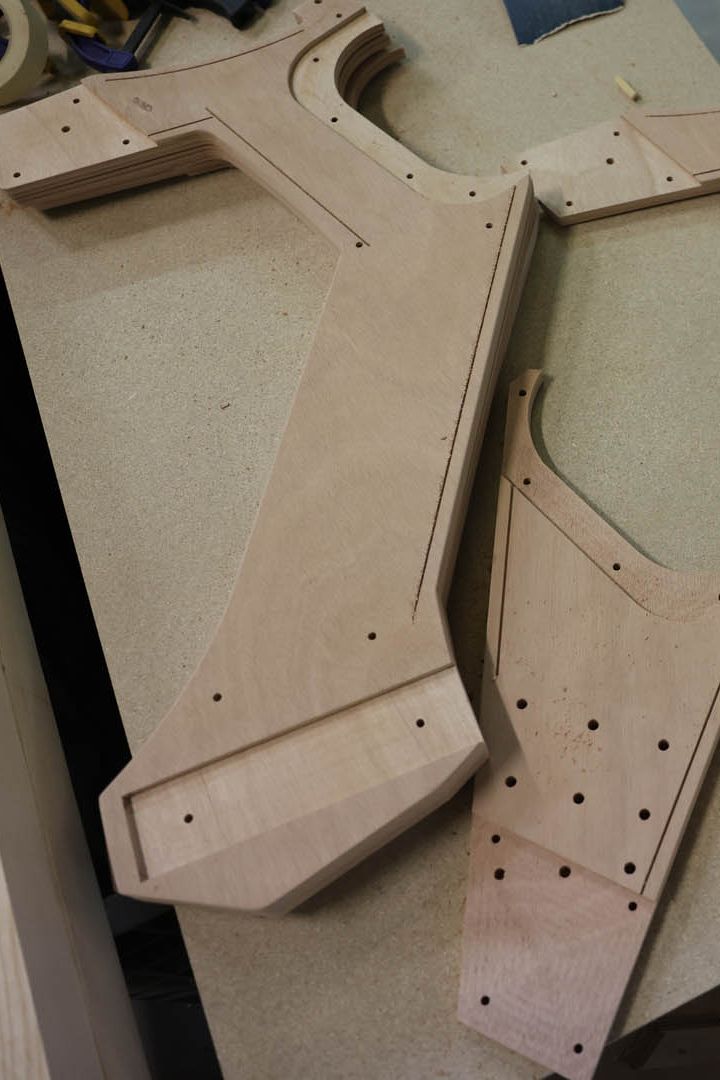
Workmanship and Peculiarities
Production and workmanship requires a delicate and complex technique that must be optimized from time to time, as the slightest error can jeopardize the entire process and the rejection of the entire part. That's why the frames of our E-Bikes, as well as the finishing touches, are madeone by one and entirely by hand.
Both frames are designed by coupling two parts that come together at the level of the center tube and at the height of the head tube, areas that are reinforced by metal structural elements.
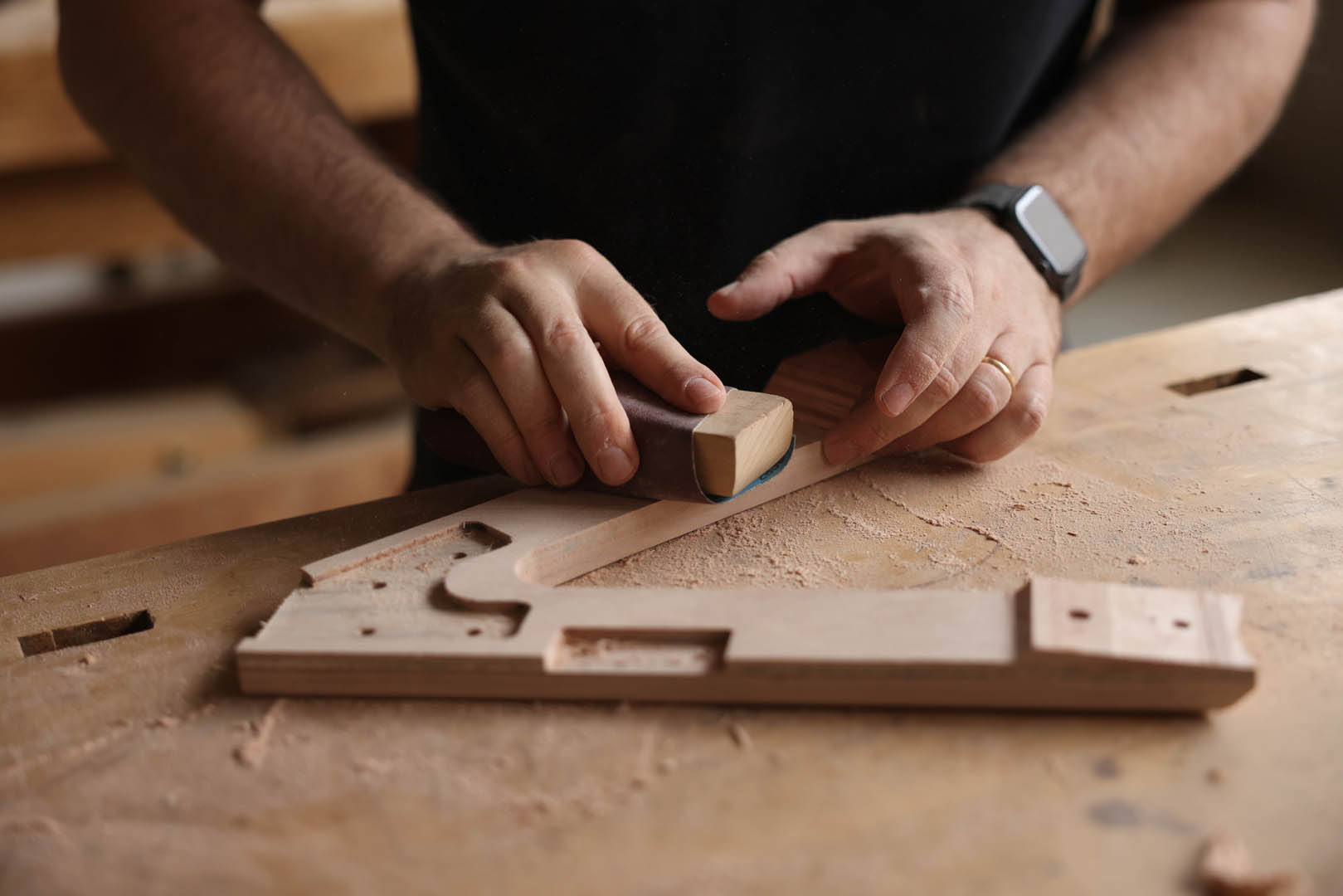
The two coupled panels allow ample room for the structure to move, thus ensuring better response to stresses due to torsion, and providing lightness to the whole structure. It is obtained by gluing together several layers of “veneers,” which are thin sheets made from the planks of wood.
These sheets are held together through the action of specific water-repellent glues (used strictly according to specific control regulations to avoid their toxic effect), which can guarantee maximum resistance, including resistance to the action of boiling, making marine multilayer absolutely suitable for outdoor application.
The layers are glued in an alternating overlap mode from the point of view of fiber position. This provides a very stable end result, preventing warping on the surface and ensuring maximum strength. The central compartment that is created has been profitably utilized both to fully integrate all components and to create a waterproof fabric “trunk” compartment, ideal for storing one’s belongings while traveling.
PRODUCTION
1. Creation of shapes
At this stage, the squaring of the Okumé plywood panels is defined. Panels are clamped and contoured with templates on inclined planes to outline shapes and holes. The rough shapes are CNC machined so as to automate the process and cancel any clipping errors.
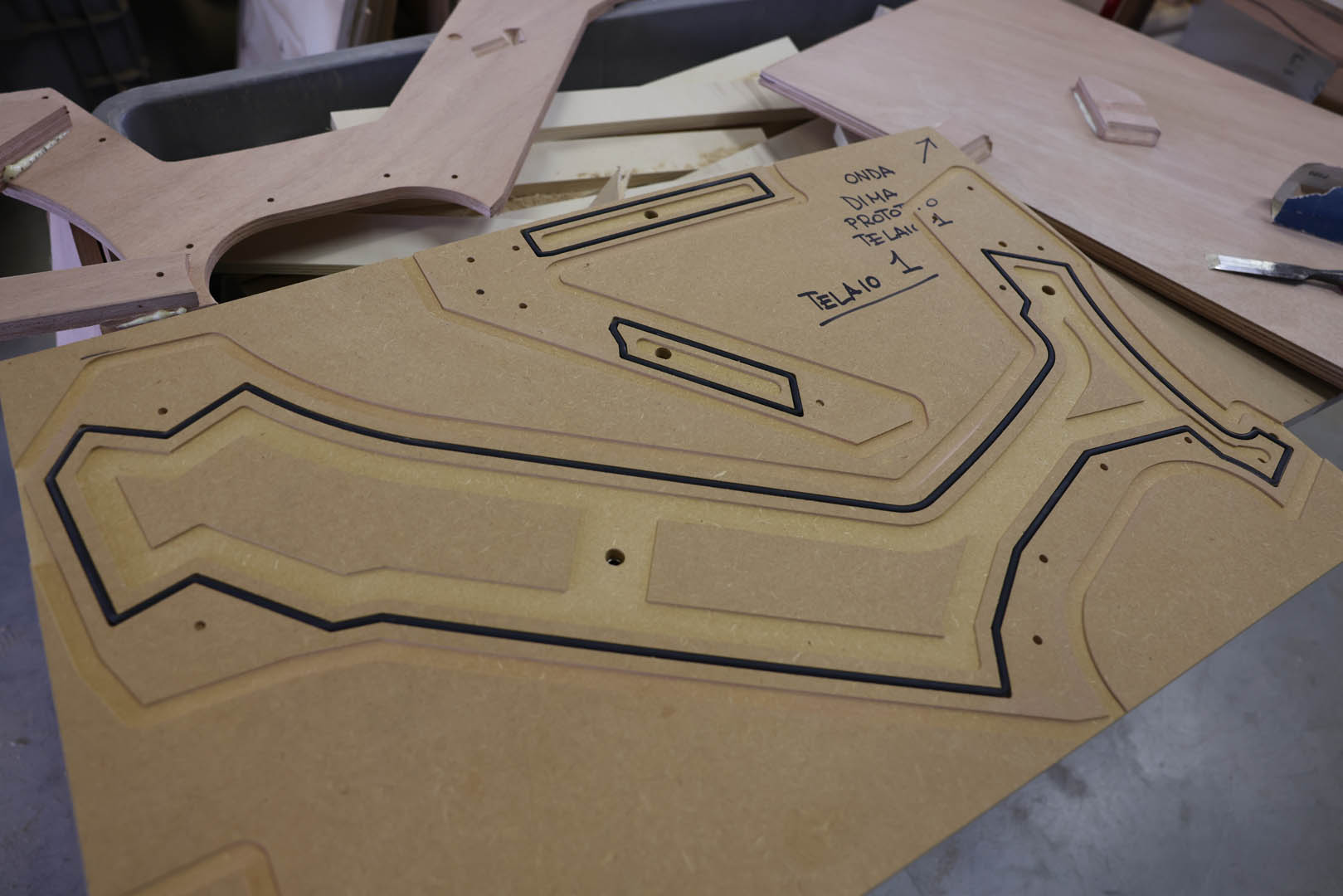
2. Cleaning and Finishing
Following milling, each corner, outer edge and inner edge is machined by hand. Only the skill of master craftsmen makes it possible to guarantee the excellence of the result. It begins with sandpaper passes of varying degrees of hardness so as to remove imperfections, then chamfering the inner edges that will make room for the metal hooks. The process is repeated until a smooth surface without impurities is achieved. Once the frame components are completed, they are joined using special dowels and a UV-resistant and highly water-repellent polyurethane glue. Once again the surface and edges are finished to remove any remaining glue and align the edges.
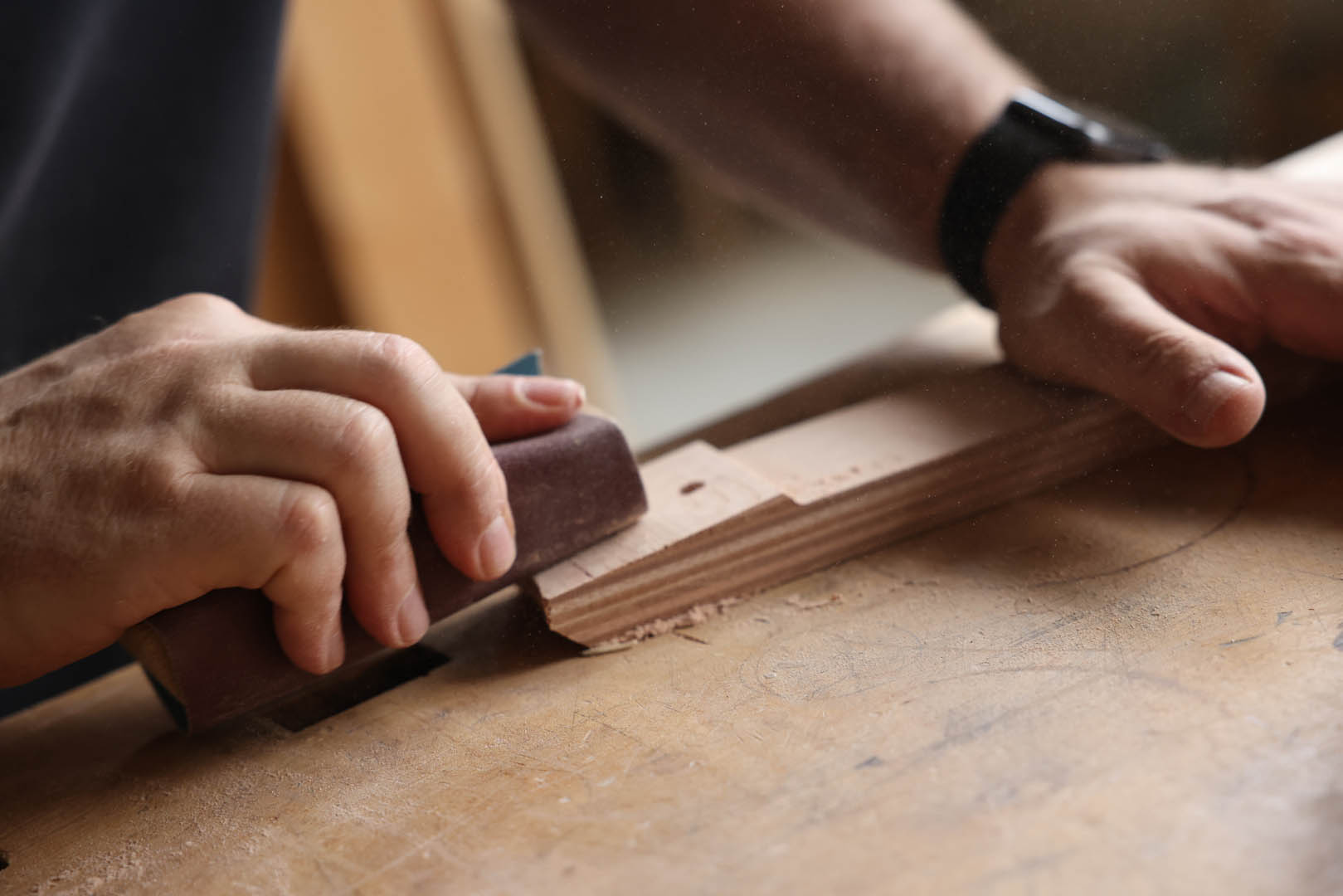
3. Painting
For the benefit of structural strength and lasting appeal, Okumé frames, are treated with natural varnishes based on different active ingredients, but which have a distinct ecological vocation and a powerful protective function. It starts with an initial priming with a water-based impregnating agent used for outdoor furniture. It is essential to allow a natural drying process that lasts as long as 24 hours, after which a new manual sanding process is carried out in order to align the surface. The process is repeated three times, always allowing each coat to dry for 24 hours, until the surface is perfectly shiny and aligned. This is the stage when the water-repellent properties of Okumè plywood are strengthened to the maximum. A final coat of neutral-colored protective varnish is given so as to preserve the natural color of the wood, which will provide almost total resistance to impact and weathering. This is one of the most time-consuming but important steps in the entire process as it will allow the wood to preserve its beauty over the years.

VIDEO
